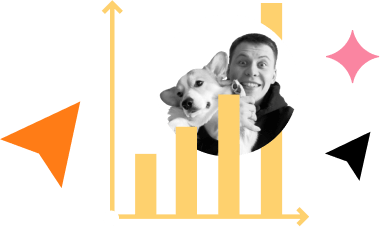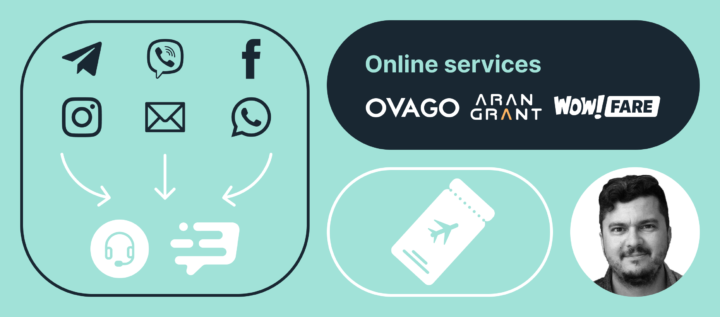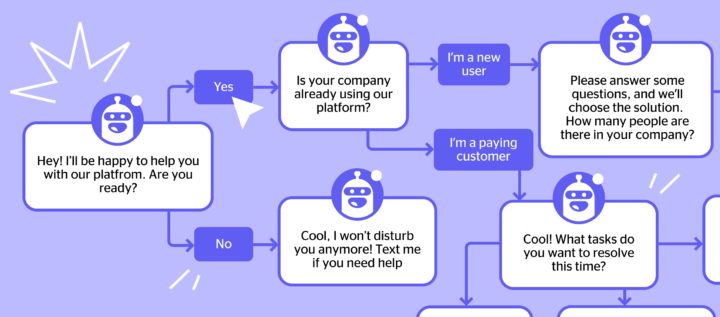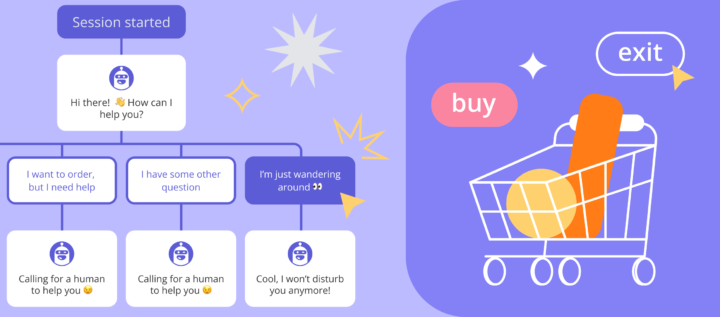How LeadGen App grew sales by 31% and improved support with chatbots
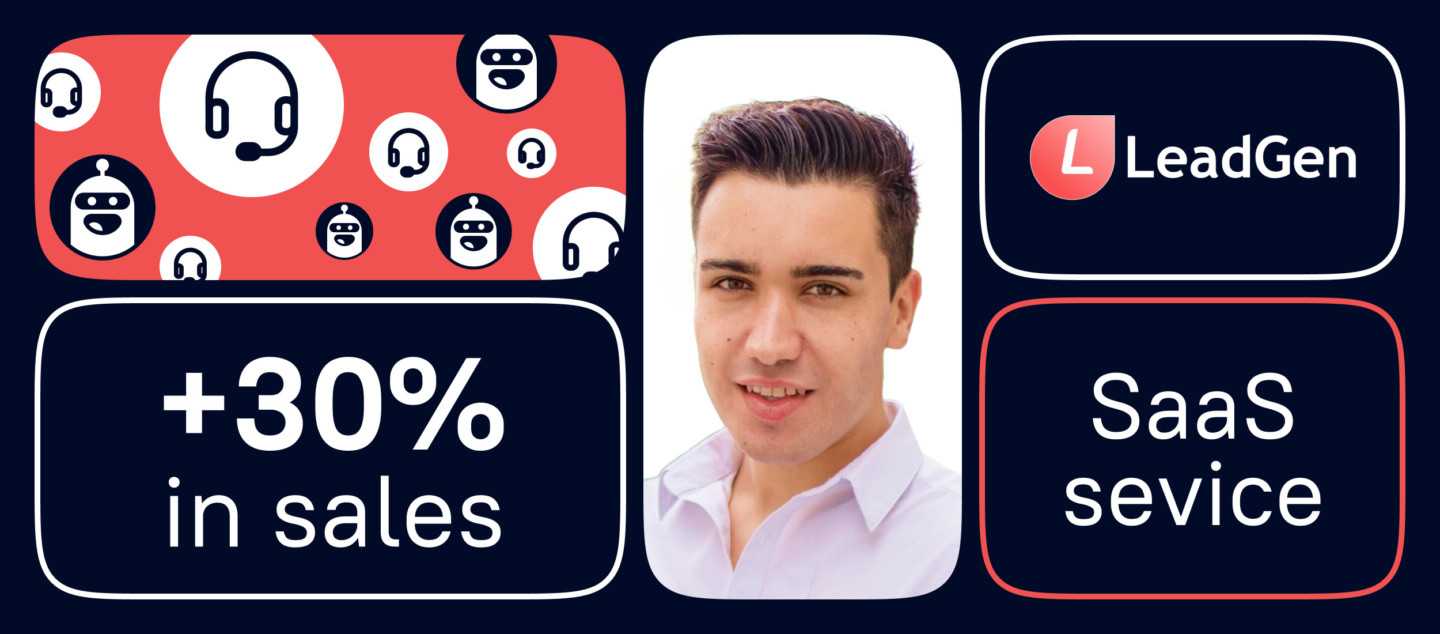
We caught up with Christopher, co-founder of LeadGen App, about how their team reduces customer support requests and increases sales conversion with Dashly.
Challenge: The LeadGen App team carries out the tasks related to both sales & support manually via email. But with increasing traffic, answering different types of user requests equally fast became hard at some point.
Solution: optimize human resources by automating communication between customers and the brand about service and price questions.
Results: +31% sales and 2x more interactions with clients.
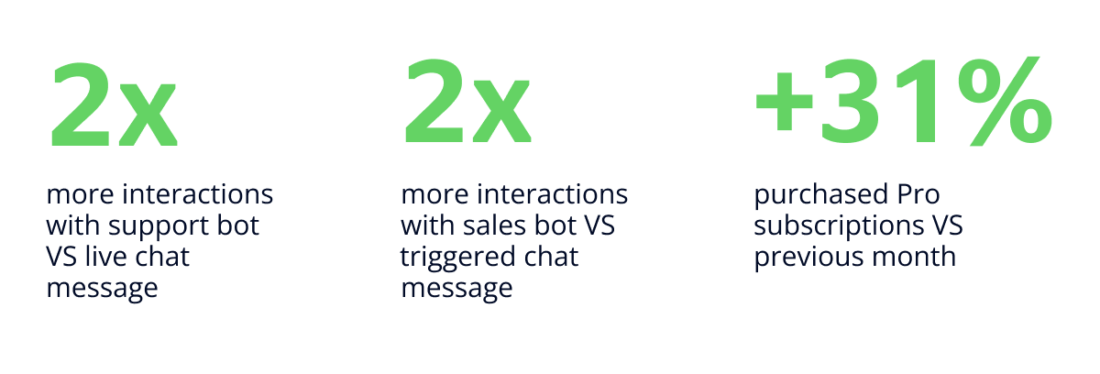
Enjoy the read!
Or watch the video:
About the client
When sales volume stays the same or worsens, LeadGen App is on a mission to maximize the number of high-quality leads from a website. Providing a form-builder, they help SME businesses, digital agencies, and marketers create conversion-optimized forms that get more responses in lead generation campaigns.
Type of business: B2B startup
Business model: SaaS
The challenge: Christopher, co-founder LeadGen App, has a team that carries out the tasks related to both sales & support. After communicating with people via email only, they came to the idea of human resources optimization. To focus on business growth, his team decided to automate part of common sales and support processes with a chatbot.
So, they hired Dashly chatbot to:
- Get more sales from the existing traffic on their website and app,
- Reduce the support team workload.
Look at how they reach these goals without scaling the team with the Dashly chatbot.
Proactive customer support via chatbot
The task: Reduce the number of support queries.
Customers expect an immediate two-way conversation with a brand when visiting a website. Especially in terms of customer support. But when your resources are limited, instant replies turn into 30 min waiting.
This is a common situation for B2B companies like Christoper’s.
Even though it is enough to cover all the customer requests they get from email, website chat, and Facebook community, it isn’t enough for business growth. Christopher realized that the time they spent answering common questions could be devoted to product hypotheses research and testing.
Thus, LeadGen App hired a chatbot for support.
Having a chat on the site is a must-have for a SaaS business, even if you are in the early stage.
In addition to a chat, Christopher has launched the Dashly chatbot. And now everyone who enters the in-app “Help center” page is welcomed with a question:

It provides answers to common questions about the product.
There are nine answer options aimed to cover all the use cases of the LeadGen App. Clicking any of them, you get a detailed answer leading you to the relevant page/video/article from a knowledge base or a human agent.
Here’s the example of the LeadGen Bot flow answering the FAQs instantly, so the human agent has time to focus on other tasks:
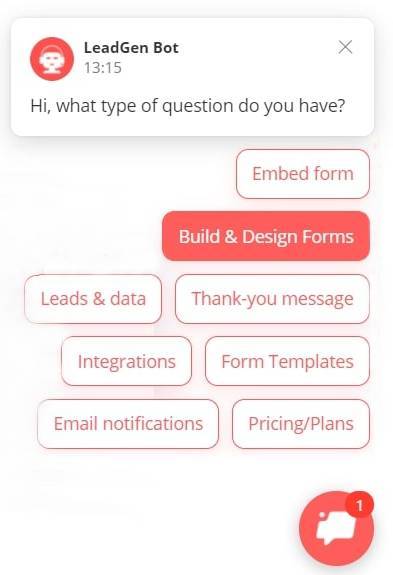
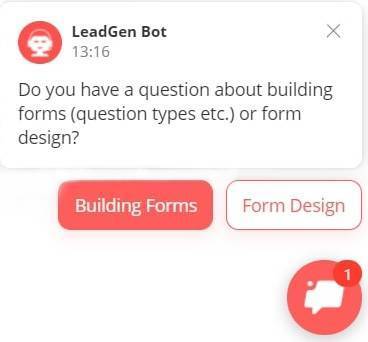
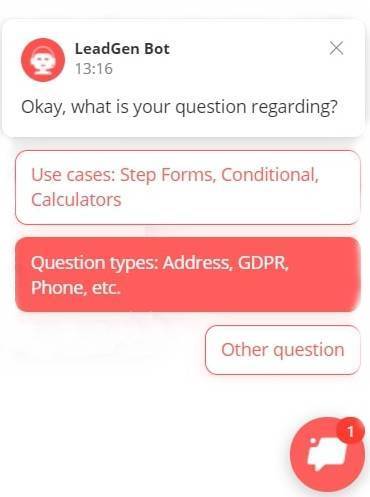
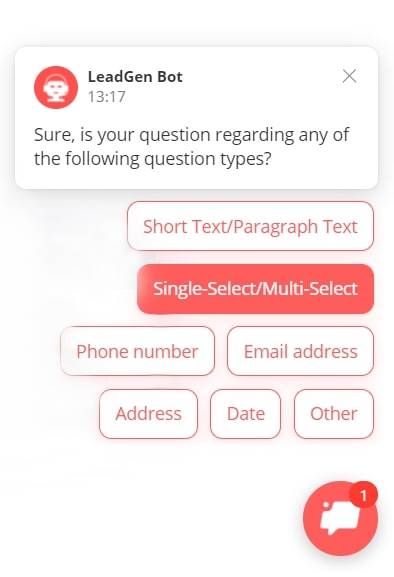
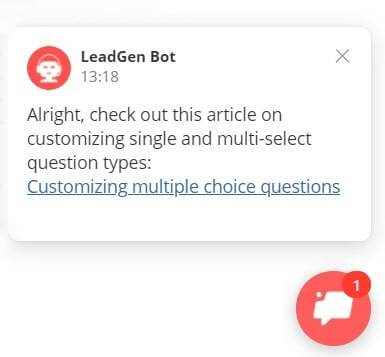
As a result, instead of waiting for customer service to email them back, more and more visitors are turning to chatbot. Thus, visitors instantly have all the necessary information to start using the tool right after a conversation with the chatbot.
After a month of chatbot usage, 41% of people who visited “Help Center” interacted with the bot. This number is almost 2x bigger compared to 22% of visitors who interacted with a triggered chat message (human agent).

There is no surprise. Because clicking answer buttons is way easier and faster than typing a message.
Thus, despite the growing number of people who needed help, the number of customers who asked for in-person consultations was the same. Thanks to Dashly chatbot self-service, the LeadGen App team avoided a potential increase in customer support requests.
When people find the answers to the majority of LeadGen App use cases in chatbot, our team has time to focus on the growth.
This result inspired Christopher to launch the second chatbot for sales.
31% sales growth with a chatbot
The task: Improve the free-to-paid conversion rate
First, in addition to manual sales activity, Christopher’s team used a combination of email nurturing campaigns and pop-ups. And this worked. But there were two functional disadvantages of these tools:
- Email campaigns aren’t about instant conversion. This channel needs time to convince subscribers to buy.
- Trigger messages are one-way communication with visitors when they want an immediate conversation.
Thus, Chris replaced the triggered message with a chatbot. Now it answers the most common questions about plans on the website’s pricing page.
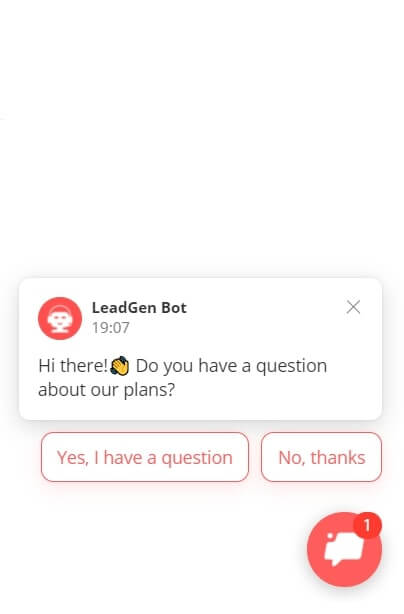
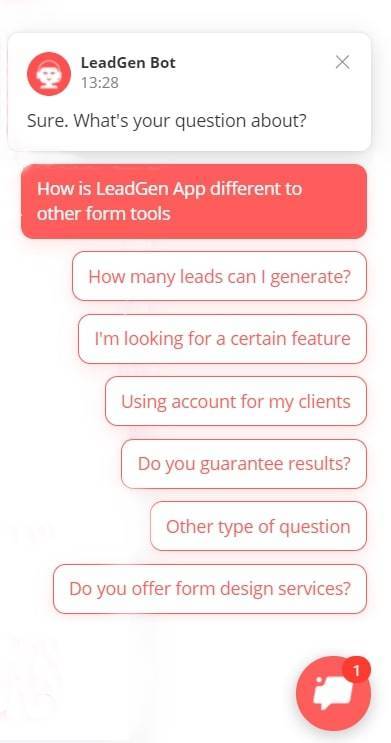
The start of the sales LeadGen Bot flow. Sign up now and create your first chatbot campaign in 15 minutes
When choosing any of them, for example, “How LeadGen App is different to other form tools,” you’ll get a detailed answer with a link that routes visitors right to the free account registration:
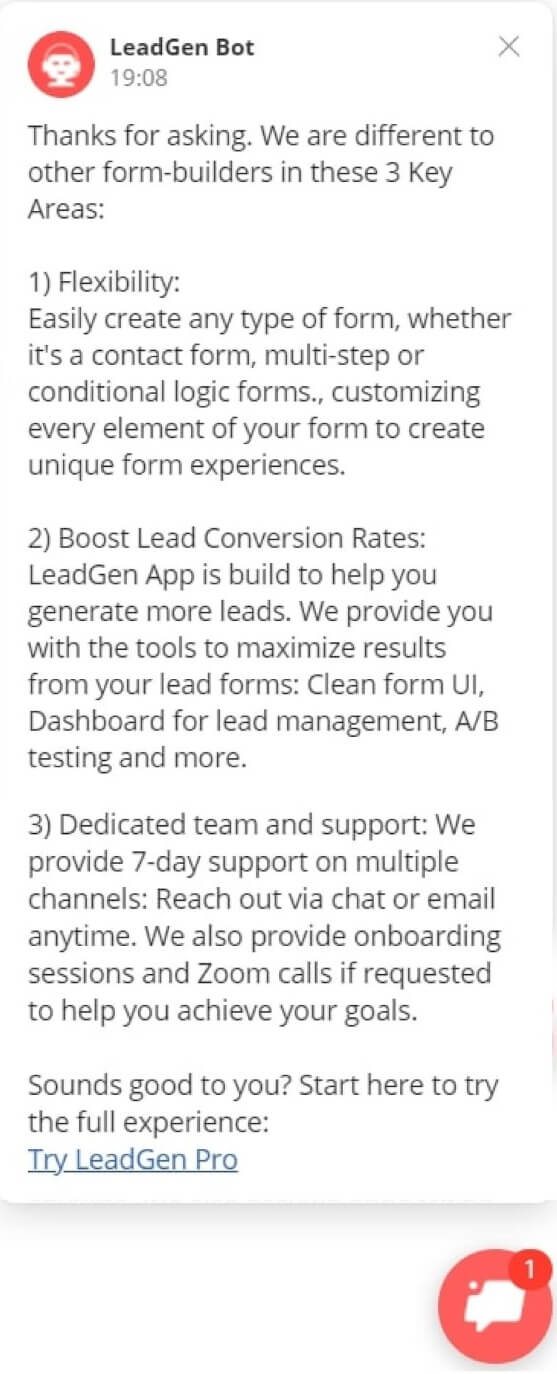
At the end of the message clients see a link leading them to the registration and LeadGen App Pro Tariff:
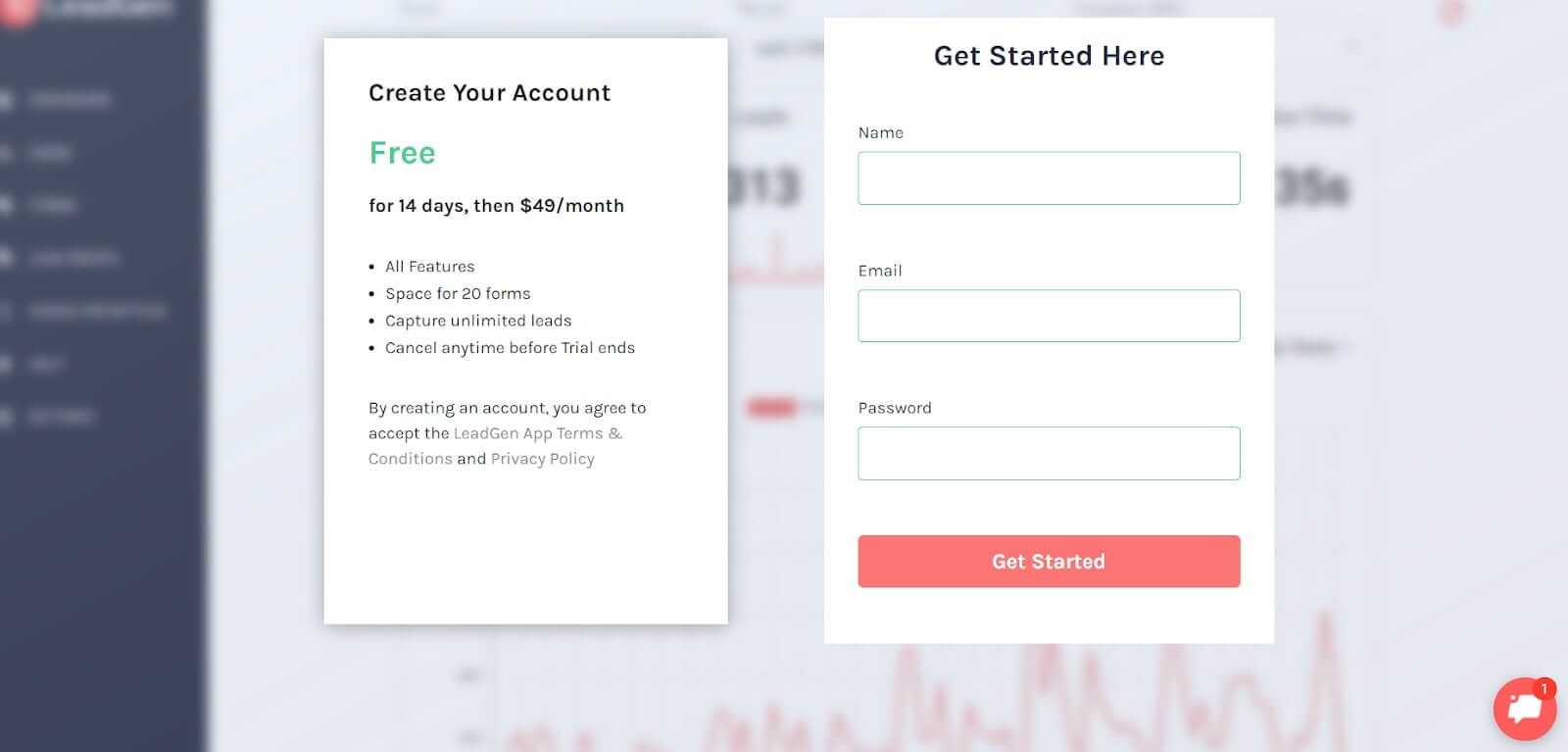
When visitors look for a certain feature, the chatbot asks them to share an email. Thus, Christopher can contact them later and tell them in detail about the chosen feature.
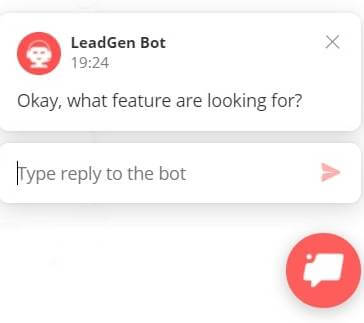
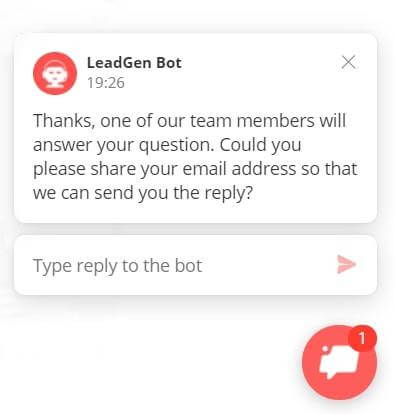
As a result, Christopher has registrations and qualified leads to follow up.
Chatbot lowers the hesitation before purchase because in its answers, visitors see the next steps for them.
And it works!
A month after a chatbot implementation, the team noticed a 2X growth in the number of people who had a conversation with a bot compared to those who interacted with a triggered message from the chat.

The increasing number of people who interacted with the chatbot on the pricing page influenced sales and brought the company 31% sales transactions growth after the first month of chatbot implementation.
Moreover, the Sales team started using the information from the chatbot to qualify the leads. They see the history of people’s behavior and reply to chatbot. This is how the team can define if there is a chance to upgrade the user via follow-up messages.
As a result, the Dashly chatbot didn’t help to increase the free-to-paid conversion rate. But, by mentioning Pro Tariff in the conversation flow, the chatbot engaged people to register and buy it. Thus, the Dashly chatbot increased sales by +31% compared to the previous month.
Read also:
Streamlined Sales Funnel Management: A Practical Guide
Why Every Business Needs a Sales Funnel Template
Email campaigns integration
Looking ahead, the LeadGen App team has plans to support their fast-growing business across sales, support, and marketing by integrating an email campaigns system with Dashly.
When I need to check the data from my email campaigns and chatbot, I combine this info from the two different systems manually. I’d like to have all this data in one place with the opportunity to add tags and analyze it fast. Thus, in the nearest future, I’m going to integrate my campaigns with Dashly.
Additionally, we have a collection of 30 triggered campaigns for SaaS company website. These scenarios have everything for growing sales and website conversions: trigger message ideas, marketing copy, events, timeouts for setup, and even the revenue each campaign can bring!
Choose a campaign, customize and launch it in Dashly.

